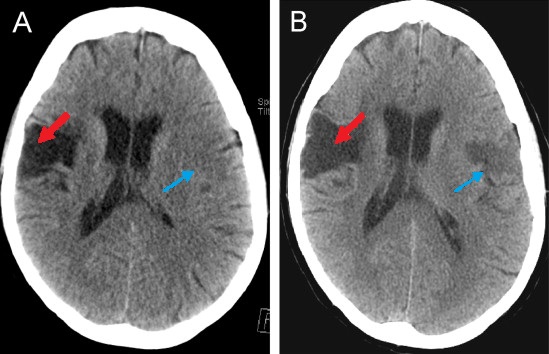Playlist
Show Playlist
Hide Playlist
NIH Stroke Scale (NIHSS)
-
Slides Management of Acute Ischemic Stroke.pdf
-
Download Lecture Overview
00:00 So what is the NIH stroke scale? How do we evaluate patients in the ER and understand the size of their stroke? It starts with a good history and the exam is really a focused exam. 00:12 It needs to be completed quickly and get us the information we need to know "Is this patient having a stroke?" and "What's the size of the potential tissue at risk?" To do that, we use the NIH stroke scale. And we'll walk through the stroke scale in the series of tables. This is more for your reference than to understand and memorize all of the details. We look at a comprehensive assessment from head to toe of neurologic function. First, we look at level of consciousness and consciousness is graded based on the level of alertness of the patient. 00:43 Are they alert or not alert? Not alert requiring repeated stimulation or unresponsive. And higher scores indicate a worse level of consciousness. We also look at various levels of orientation, ask patient "What is the month?" and "What is your age?" and you can see the points given for whether answers are correct or incorrect. And then we look at command following, asking the patient to open and close their eyes and grip or release their hand, looking for signs or symptoms of aphasia. Gaze is important. We look at gaze, looking for a gaze preference and a gaze palsy. Gaze palsies or forced deviation of the eyes indicates brainstem stroke and patients get a higher score for that, a more concerning stroke sign. 01:29 We also look at vision and we're looking at visual fields to evaluate patients who may have occipital or parietal temple radiation lesions and patients who have significant visual field dysfunction or larger territory of cortical stroke again get higher scores on the visual testing. We look for facial palsy, looking for both minor and major facial paralysis, motor function in the arm, motor function in the legs, and limb ataxia looking for cerebellar findings and cerebellar dysfunction. We look at the sensory system as well as language function evaluating for aphasia. And then finally, we evaluate for dysarthria again looking for brainstem dysfunction and extinction or inattention of parietal cortical function. All the totals are added up then we get a final score somewhere between 0 and 42 and this quick assessment allows us to quickly come up and confirm a diagnosis of stroke and determine the degree or severity of that potential ischemic stroke. When we think about the NIH stroke scores, we can divide them into mild strokes or moderate strokes or concerning from moderate to severe or severe strokes based on the number of the score, the level of the NIH stroke score. A stroke score of 0 indicates no stroke or symptoms that have resolved which would be consistent with a TIA. Scores between 1 and 4, we tend to consider minor; 5 to 15 moderate; 16 to 20, moderate to severe; and stroke scale scores greater than 20 are considered signs of severe stroke or very large territory or deep posterior circulation and brainstem strokes. Again, there are varying use of these numbers and determination of the size of the stroke based on the type of symptoms for the patient, but this general rule can be used to determine the area of brain that's at risk and the sense of urgency for intervening for patients.
About the Lecture
The lecture NIH Stroke Scale (NIHSS) by Roy Strowd, MD is from the course Stroke and Intracranial Hemorrhage.
Included Quiz Questions
A patient with a score of 2 in every category of the NIH stroke scale is consistent with what level of stroke?
- Severe stroke
- No stroke
- Mild stroke
- Moderate stroke
- Indeterminate level of stroke
In describing a patient's level of consciousness on the NIH stroke scale, what numeral is assigned to a patient that is unresponsive?
- 3
- 0
- 1
- 4
- 5
Customer reviews
5,0 of 5 stars
| 5 Stars |
|
5 |
| 4 Stars |
|
0 |
| 3 Stars |
|
0 |
| 2 Stars |
|
0 |
| 1 Star |
|
0 |




